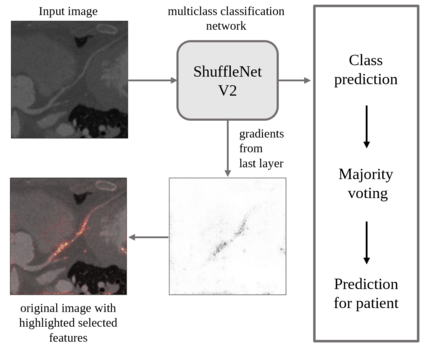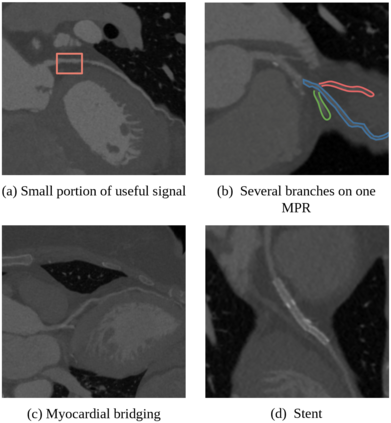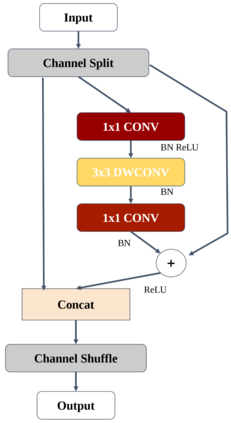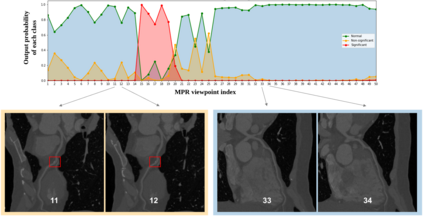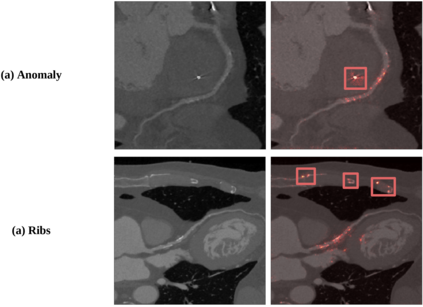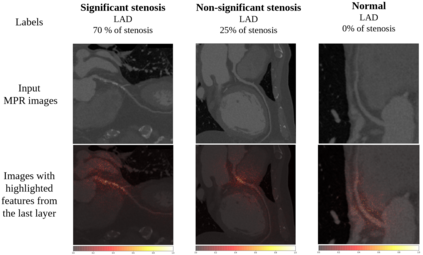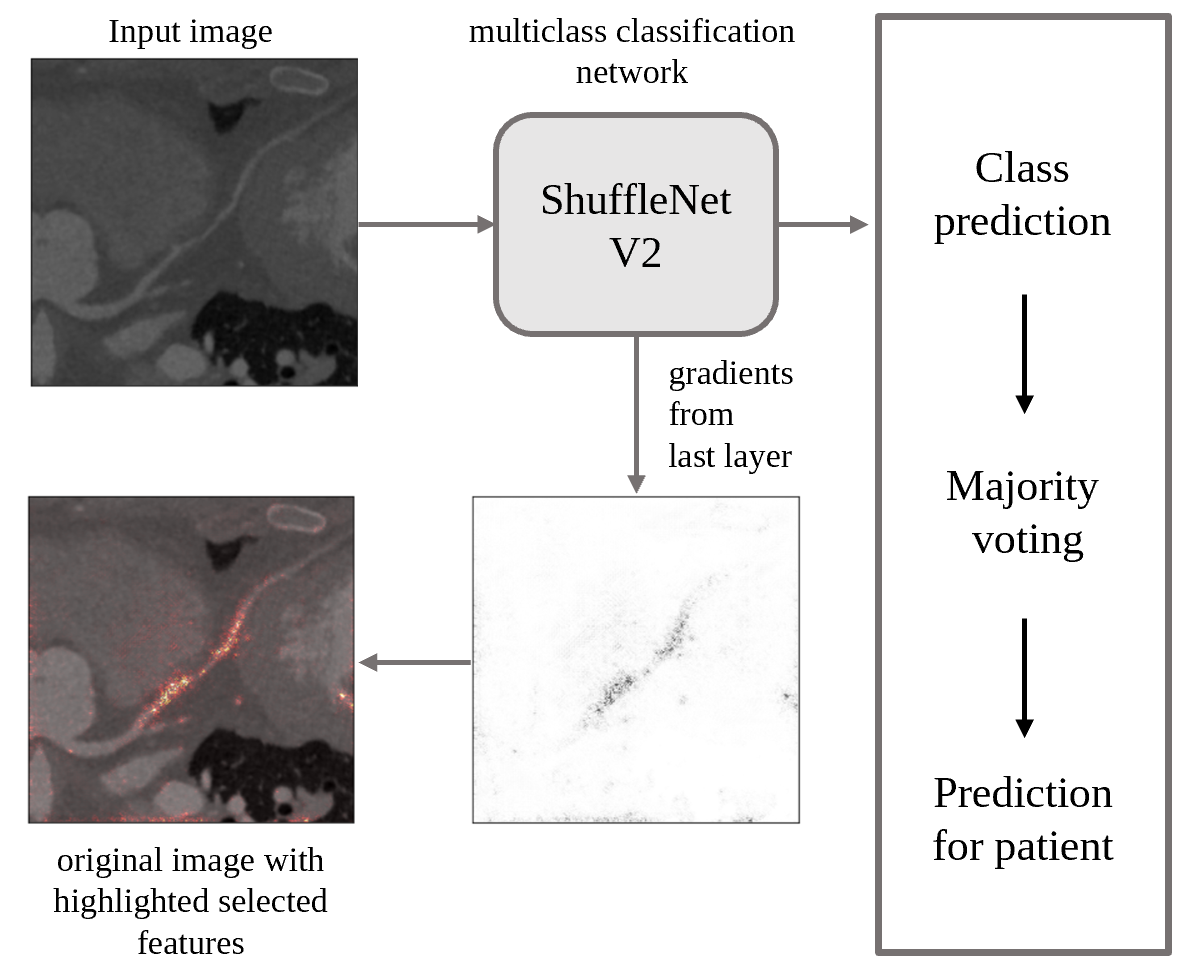To decrease patient waiting time for diagnosis of the Coronary Artery Disease, automatic methods are applied to identify its severity using Coronary Computed Tomography Angiography scans or extracted Multiplanar Reconstruction (MPR) images, giving doctors a second-opinion on the priority of each case. The main disadvantage of previous studies is the lack of large set of data that could guarantee their reliability. Another limitation is the usage of handcrafted features requiring manual preprocessing, such as centerline extraction. We overcome both limitations by applying a different automated approach based on ShuffleNet V2 network architecture and testing it on the proposed collected dataset of MPR images, which is bigger than any other used in this field before. We also omit centerline extraction step and train and test our model using whole curved MPR images of 708 and 105 patients, respectively. The model predicts one of three classes: 'no stenosis' for normal, 'non-significant' - 1-50% of stenosis detected, 'significant' - more than 50% of stenosis. We demonstrate model's interpretability through visualization of the most important features selected by the network. For stenosis score classification, the method shows improved performance comparing to previous works, achieving 80% accuracy on the patient level. Our code is publicly available.
翻译:为了减少病人对冠状动脉疾病诊断的等待时间,采用了自动方法,使用冠状成像成像仪扫描或提取多平面重建图像来确定其严重程度,让医生对每个病例的优先级进行第二次观察。以前研究的主要缺点是缺乏能够保证其可靠性的大型数据集。另一个限制因素是使用需要人工预处理的手工制作特征,如中线提取。我们克服了这两种限制,采用了基于ShuffleNet V2网络结构的不同自动化方法,对MPR图像的拟议收集数据集进行了测试,该数据集比该领域以前使用的其他系统都大。我们还省略了中线提取步骤,培训和测试了我们的模型,同时使用了708个和105个病人的全曲线MPR图像。模型预测了三个类别中的一类:正常的“不严重性”,“不明显性”-50%所检测的紧张性硬化症,“重大性”-50%以上的紧张性硬化症。我们展示了通过可视化的MPR图像集成模型的可判读性,这比这个领域以前使用过任何其他方法。我们选择了80个最重要的性能等级,这是我们网络所选择的正确性能的模型。

